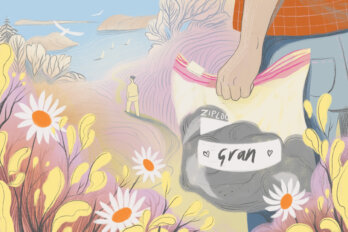Shawn Moreau’s long pink hair whipped around his face as he hung off the side of a building. Hawks flew beneath his feet, and he could see the Canadian Rockies in the distance: “the best damn office window in the whole world,” he called it. It was 2014, and as a full-time window washer, Shawn, forty-five, would hang off buildings for up to twelve hours a day. He loved the high, but he knew it was also dangerous work, being so far up in the sky with only a harness. He had been working on and off for the past few decades, switching between construction, landscaping, and restaurant work. For five of those years, he had been alone and homeless, bouncing between Calgary and Edmonton. Now, in 2014, he lived in Edmonton with his wife, Sabrina, thirty-five, and her two young children, Andrea and Vanda. But, by the end of the fall, when it became too icy for outdoor work, the paycheques began to dwindle—they were not enough to support the family over the winter.
Before meeting Shawn, Sabrina had been a single mother for years, working various jobs in the service and sales industries in Edmonton. But in 2014, the liquor store where she worked full-time announced it was closing and offered her a transfer—with a drastic cut in her hours. The small amount of work wasn’t worth the transportation costs and time away from her children, so she quit.
That October, the family decided to move to a city where the weather was milder and the window-washing season longer. They left Edmonton with their belongings packed in a 1970s RV. Since neither Shawn nor Sabrina have a driver’s licence, they hired two people from an online classifieds site to drive to Vancouver. The group travelled nine hours the first day, then slept in the RV in the middle of the Rocky Mountains. At the end of the second day, they arrived at the Guildford Town Centre, in Surrey, thirty minutes’ drive from Vancouver. Shawn, Sabrina, and the girls slept in the RV behind the mall, waiting for their drivers to return in the morning. But the drivers never came.
In the early morning, security guards pounded on the door. Shawn and Sabrina started calling charity organizations in the area, asking for assistance. They had come from Alberta, they explained, and they were further from Vancouver—with its jobs, social assistance, and food banks—than they had planned. At around 8 a.m., the Society of St. Vincent de Paul sent someone to drive the Moreaus to Peace Arch RV Park, twenty minutes south of the mall, and paid for two weeks’ lot rent.
Sabrina and Shawn had underestimated expenses for the gas-chugging RV: about $50 remained after their trip from Edmonton. So, as soon as they arrived to the RV park, the couple began calling welfare organizations in the area. A little church in White Rock, a city just south of them, drove them to the grocery store and paid for food. Soon, the family was registered for hardship assistance from the province, which provides temporary payments—but eligibility has to be re-established every month. The family was given $900—nowhere near enough to pay for a place to live. In today’s economy, starting fresh with little income is nearly impossible to do. The Moreaus were treading the fine line between poverty and homelessness.
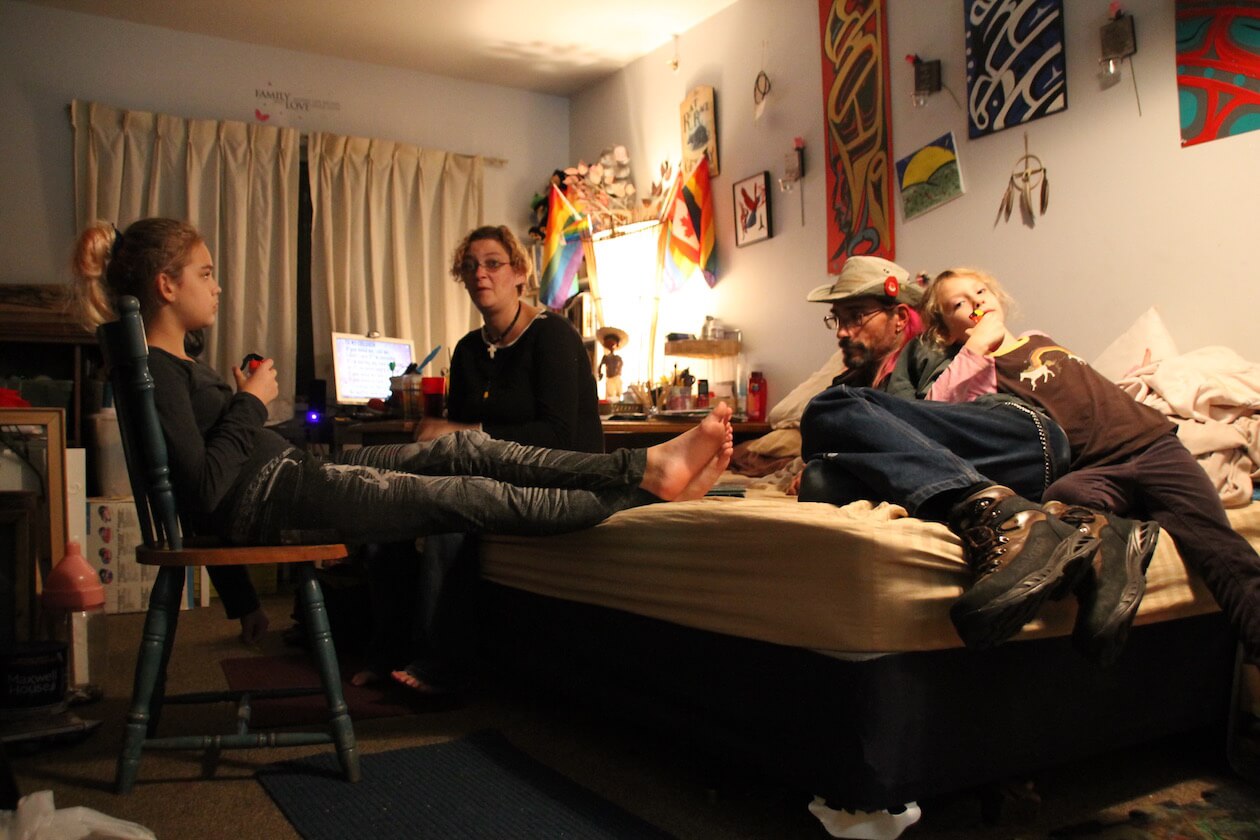
Metro Vancouver is known across Canada for its affordability crisis: a detached house in the city today costs approximately thirty-eight times the median income of $65,000. But we often talk about this problem as one that affects millennials, something related to first-time condo renters and homeowners. In reality, those affected most directly by the economy are the lower class—the people for whom losing a house may mean having nowhere to sleep.
During last year’s homeless count, Metro Vancouver (which includes Surrey) had at least 3,600 people without permanent housing. Between 2014 and 2017, that number increased by 30 percent. And the main cause for this growth in homelessness is a lack of affordable places to live: rent is too high and options are limited, according to the 2017 Homeless Count in Metro Vancouver. When housing is lost for whatever reason—missed payments, increases in rent, bug infestations, or evictions—it can be hard to find a new place in time. But applying for government programs, such as income assistance and subsidized housing, involves paperwork, caseworkers, and arbitrary delays. Wait-lists are so long that, often, they make the programs redundant.
Families with children have been hit especially hard. Between 2007 and 2014, income for two-parent, two-child families increased by 10 percent. Yet basic family expenses increased by 18 percent, rent by 26 percent, and child care by 35 percent. A family that has lost its apartment in Vancouver can turn to friends or, if there is no one, to shelters—temporary solutions, the family might say, until housing becomes available. When shelters are full, which they often are, and the situation is dire, people turn to safe houses, hospitals, jails, and transition or detox facilities. But those places aren’t family friendly, and they take people in day by day, not month by month, not permanently.
Vi Fineday, tucked away in a residential neighbourhood, is the only shelter in Vancouver that allows whole families to stay together in one room. Jennifer Johnston, the executive director, says the shelter turns away about 200 people every month. And, though some families stay for months on end, they might still not be approved for a spot with BC Housing. “There’s just not enough subsidized units,” Johnston says. How can parents find a job, start a savings account, or build a life when every night is in question?
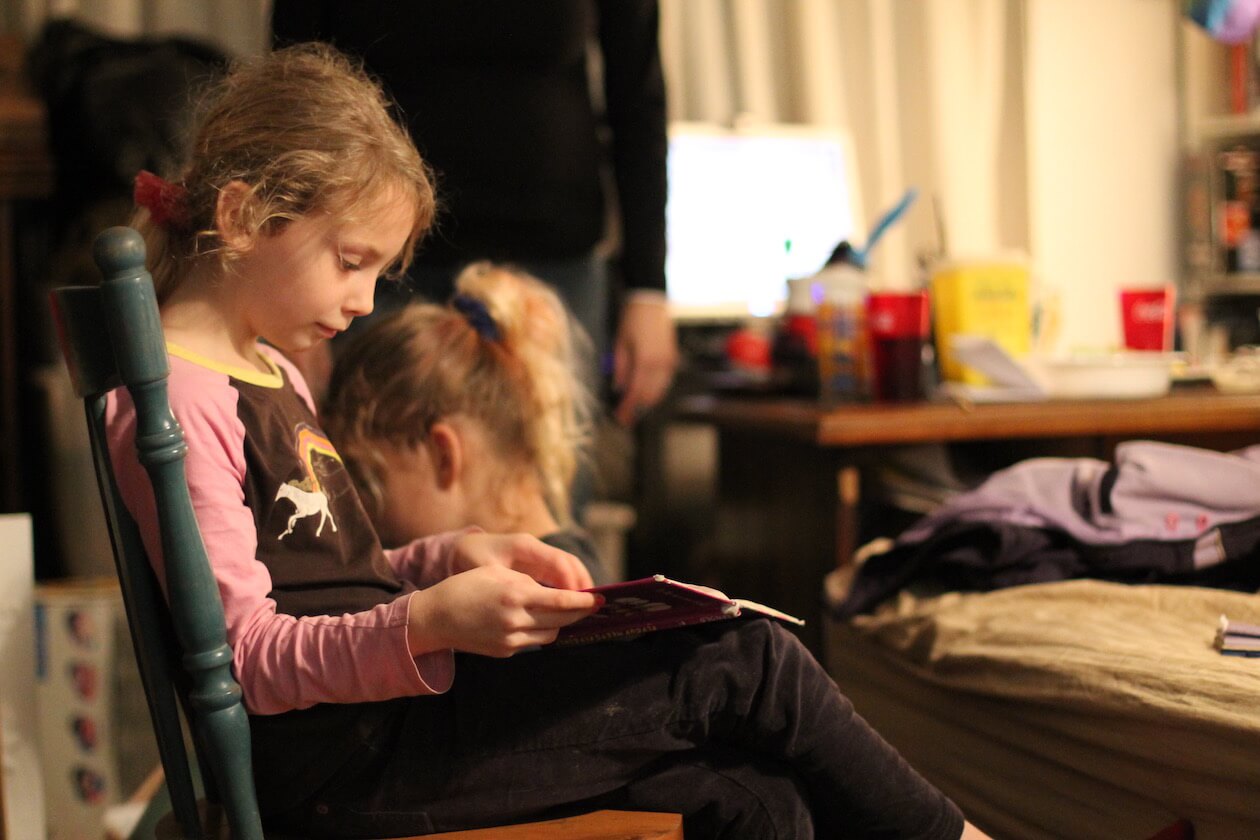
Two weeks after the Moreaus’ arrival in British Columbia, child-services workers—who had taken notice of Shawn and Sabrina’s phone calls to various shelters—visited their RV. The family’s living conditions, officers said, were unsuitable: there were no clearly marked emergency exits, their belongings were improperly stowed for travel, and the girls needed a private sleeping area. So Shawn, Sabrina, Vanda, and Andrea were forced to leave, and they moved in with a family friend in Vancouver. One month later, the friend asked them to leave, and because the Moreaus had, by then, rented out their RV to other people, they became homeless. “We had enough clothes for the girls to change three times,” Shawn says, “[and] for me and Sabrina to change twice.”
The YWCA provided the family with an emergency hotel room for the weekend, a special extension past the usual single night. That Sunday, Sabrina begged to stay longer, crying, but there was no space left. Sabrina and Shawn had been making calls to other shelters for days; income assistance payed for their low-cost phone plan. But they were told the same thing: “We’re full. Women and children only.”
Eventually, Shawn and Sabrina reached out to Belkin House, a “high-barrier” shelter (meaning that residents need to be sober and in treatment for any mental-health issues) in Vancouver that accepts two-parent families. After two inteviews with Belkin House staff, they were approved. But Shawn would share a room with other men on the third floor, while Sabrina and the girls would sleep in a private room on the seventh. Adults had an 11 p.m. curfew, while the girls had to be in their rooms by 8 p.m.
Caro Lander, manager of the emergency shelter at Belkin House, says they try to get families into permanent housing as quickly as possible—living in a shelter atmosphere, she agrees, can be extremely stressful. But compared to the “low-barrier” shelters, where drug and alcohol use aren’t as closely monitored, Belkin House is relatively stable: someone handles the front desk 24/7, and residents and caseworkers mingle on the first and second floors, where there are chairs, couches, and games. Women and children are welcome to stay all day. Still, Belkin House was no sanctuary. The mixed bag of characters in the shelter—some struggling with drug abuse or mental-health problems—put them ill at ease. And between applying for government programs, taking care of the children, and finding somewhere to sleep, Shawn and Sabrina hadn’t found stable employment in Vancouver.
During the previous few months, as the family moved from RV park to friend’s home to shelter, Vanda and Andrea had attended two public schools, the second one in Surrey. Their parents didn’t want them to switch schools again when they moved to Belkin House. So, every morning, Vanda, Andrea, and either Shawn or Sabrina would wake up at 6 a.m., get ready, and take a one-and-a-half-hour transit ride to school. The accompanying parent would wait through the day until it was time to reverse the trip—which made it difficult for either parent to work.
Before their thirty days at Belkin were up, the family had enough saved from social assistance to rent an apartment; they were still on the wait-list for BC Housing, but on their own, they had found a two-bedroom place in Surrey for $750 a month. “We carried [our belongings] on buses on a stroller. It was four trips, hauling the kids with us as well,” says Shawn.
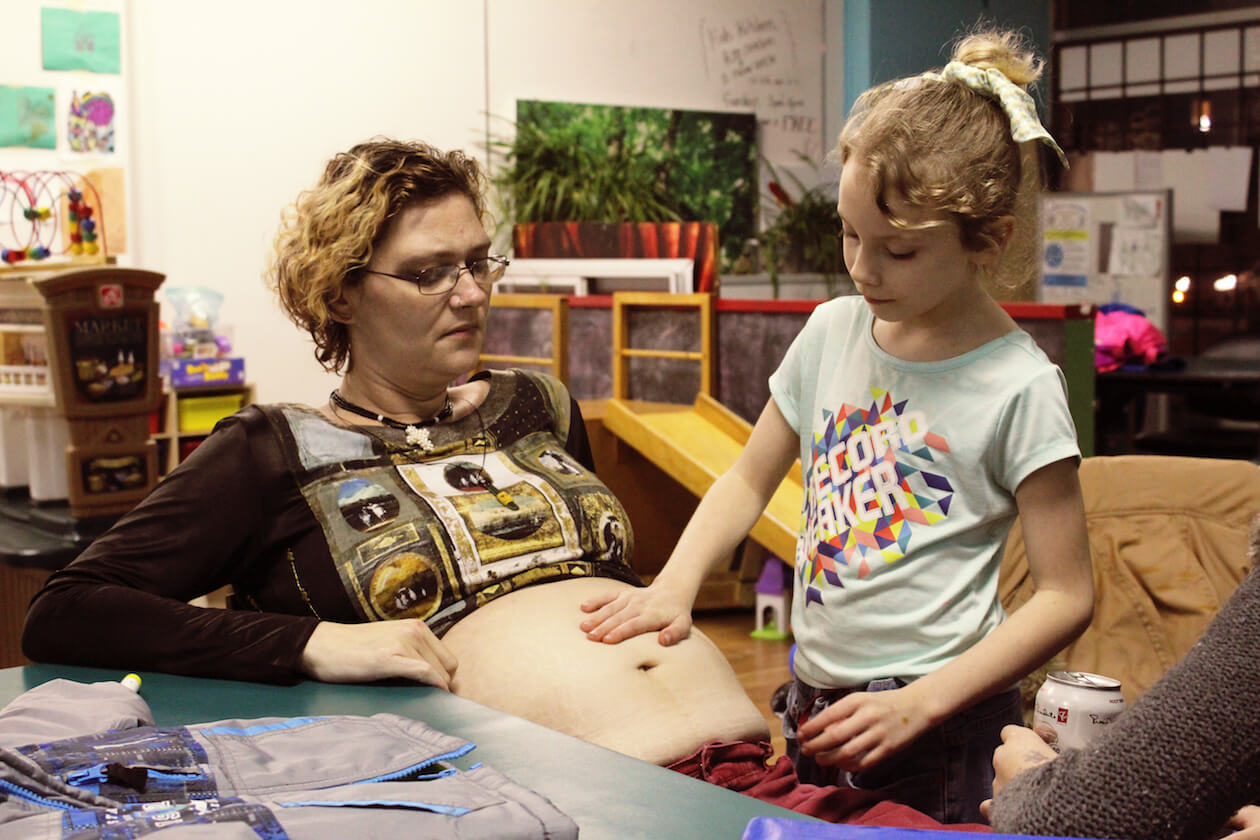
The Moreaus could finally breathe—a place to themselves. But one week after moving in, they received a phone call from BC Housing: there was a two-bedroom available for $599 a month in downtown Vancouver. It was closer to potential jobs and the city’s vast network of social-assistance organizations—and the girls’ new school, Strathcona Elementary, would be within walking distance. It was also located in Vancouver’s notorious Downtown Eastside, known for being a major hub of poverty, drug use, and sex work. There, residents die at a rate eight times the national average, and nearly $1 million a day is spent on social housing and social services, according to the Vancouver Sun. Still, the Moreaus didn’t hesitate to accept, and they moved in April 2015.
Four days before the move, with no notice, the couple who had been renting the Moreaus’ RV moved out. Because Shawn had no way to cover the lot fee or find a new place to park, the park owner seized the vehicle. Shawn and Sabrina had only one day to take the belongings they’d left behind. “I grabbed as much as I could, but this is also having to haul it from Surrey, on the train, on foot, to [the Downtown Eastside apartment]. I can only make so many trips.” Shawn left behind most of his tools, much of the family’s clothing, photo albums with baby pictures, Andrea and Vanda’s stuffed animals, and their TV, computer, and gaming system. “We lost everything,” Shawn says.
Luckily, the previous tenants in the Moreaus’ old apartment in Surrey had left their furniture behind: a couch, a loveseat, rocking chairs, three beds, and a coffee table. So the family brought everything with them to their new apartment, and on the first day, the family unpacked their few possessions and went to sleep—Vanda in one room, Andrea in another, and the parents in the living room.
That night, Sabrina found bedbugs in every room in the house. Vanda’s arm, from wrist to elbow, turned red with bites. They called the building manager, but after two treatments, the bugs were back again, falling off the ceiling, running across the carpet.
By the time a professional exterminator took care of the problem, the Moreaus had lost clothes and all of their furniture. Andrea and Vanda slept on cots in the bedrooms, and Sabrina and Shawn slept on a mattress they had been given, using a coffee table as a headboard by laying it on its side. What Sabrina didn’t throw away, she washed and powdered and packed into black trash bags, to bake the bedbugs in the sun on their cramped balcony. One of those items was Shawn’s $700 harness for high-rise window washing. The harness’s fibres were delicate; he had always made sure to protect it from the elements—concrete, pressure, gasoline, even the weather. After sitting on the balcony underneath the sun, Shawn’s harness was out of commission.
Neither Shawn nor Sabrina was able to find steady work in Vancouver. Losing the RV was hard for Shawn, who finds it difficult to work outside of home. His shaky employment history didn’t help either. Both parents decided to prioritize taking care of their family. In the warmer months, Shawn makes art as a solar carver, burning designs into wood using lenses and the sun, which he sells as a street vendor.
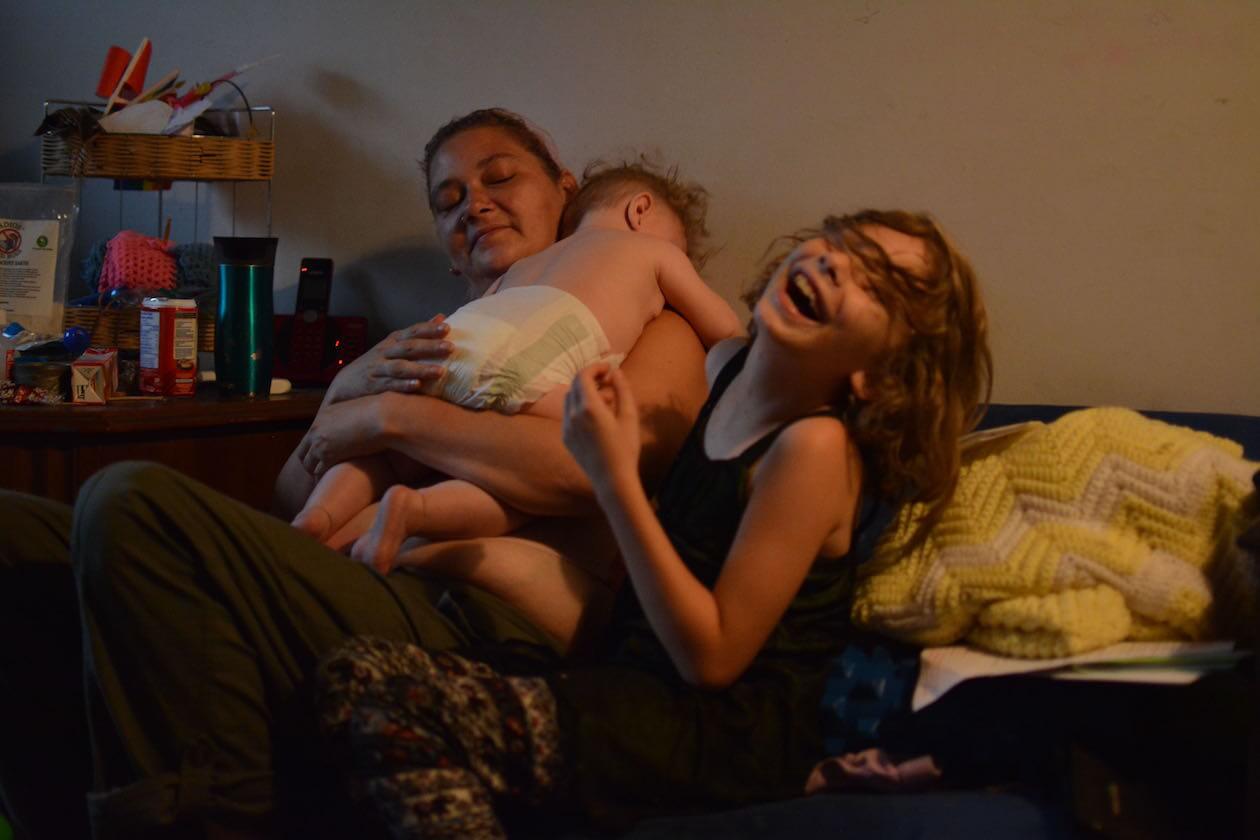
Nearly one year later, Sabrina found out she was pregnant, and in January 2017, Loretta Doreen Moreau was born. But the Moreaus still lived in a two-bedroom apartment; they had applied for a three-bedroom in Sabrina’s third trimester and received no response. Around the time Loretta was born, the family found cockroaches in the apartment. So out went the parents’ bed, which already doubled as a couch and dinner table. Shawn and Sabrina now sleep on bedding on the floor. Loretta’s playpen and toys litter the floor around their blankets.
Princess Place, where the Moreaus live, isn’t the only social-housing property with cleanliness problems. The Balmoral and Regent hotels are two notorious low-income housing buildings in the Downtown Eastside. The Balmoral evicted more than 100 residents in June 2017 because of poor conditions, including rotting walls and floorboards, according to the Globe and Mail. Currently, 426 violations have been issued against the Balmoral by the city. Nationally, the federal government promises to improve social housing in its new National Housing Strategy, which would build 100,000 new affordable housing units and repair 300,000 more over the next ten years. It is supposed to cut chronic homelessness by 50 percent over the same time period. But some housing experts criticize the strategy, saying it doesn’t address the larger issue at hand: housing prices continue to skyrocket while salaries do not.
The Moreaus have had enough. Their carpet is mouldy from the building’s burst water pipes, and drug users shoot up in front of the apartment building. Last August, they looked into a different option: living aboard a boat. Shawn has been scrolling through Craigslist. He figures a thirty-two-foot sailboat he can moor in one of Vancouver’s bays will cost around $5,000. Dropping anchor is free. A smaller boat, which they could use to come to land, would cost a bit less. Shawn thinks in one to two years he’ll have enough for both boats.
In the meantime, the family is still on BC Housing’s wait-list for a larger home. They go for dinner once a month, at places like KFC or—their favourite—Save On Meats. Shawn says that’s the extent of their spending on what they consider frivolous things, but they do take advantage of free initiatives in their community. Vanda is enrolled in a local program which aims to increase the graduation rate in the Downtown Eastside, with programs including homework clubs and teen nights. Andrea has joined a community theatre program. While the girls are in school, Sabrina and Shawn go to free lunches at Sheway, an outreach program for young mothers that provides health and social services. Fathers are welcome, so it’s an opportunity for the parents to have an activity together while Loretta plays with the other young children.
Sabrina has also been attending courses offered by the Community Action Network, which provides free advocacy training for issues around poverty. She has been facilitating meetings at her local neighbourhood house in response to the provincial government’s call for input from communities for its poverty-reduction strategy. She’s learning how to speak out, she says—and, more importantly, she’s learned that people are interested in what she has to say.




